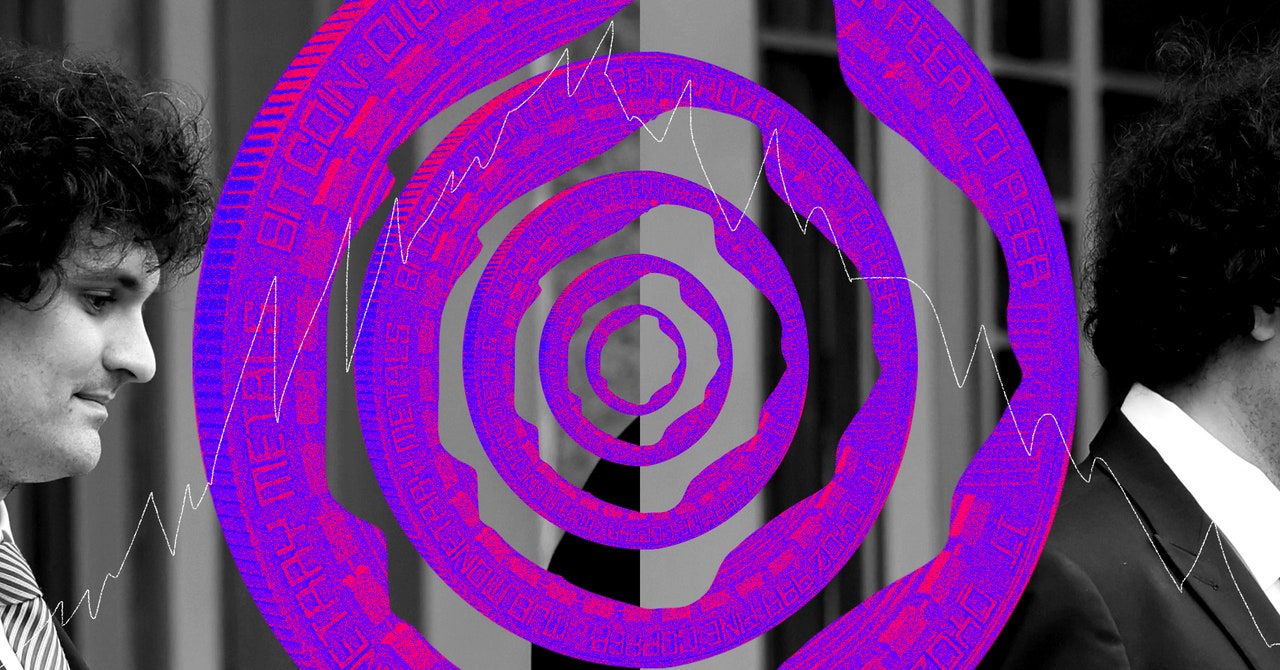

At first, Anand thought it was just a glitch. He’d read a few tweets saying that withdrawals from FTX—then the second-largest cryptocurrency exchange in the world—had been suspended. But these things had happened before in the crypto market, he said, “when they do server maintenance or something like that … so I didn’t take it very seriously.” The next morning, he woke up to find Twitter had gone wild. #FTX was trending. He tried logging in to the website, but couldn’t access his account to withdraw his funds.
Anand, who asked to use a pseudonym to speak about his private finances, lives in South India and works as a crypto research analyst. By the time FTX collapsed, he’d been investing in tokens for around five years. After reading headlines about the price of bitcoin jumping from $500 to $8,000 in just a year, he bought in. “I invested a little bit of money, and overnight it had risen by 200 percent. That was my first ever trade,” he says. From 2020 on, Anand had done most of his trading on FTX. By November 2022, he had more than 90 percent of his funds invested on the platform, around $13,000. The company’s sudden collapse that month took him entirely by surprise. “I have been in crypto since 2017, and I have never seen something like this, where the entire exchange goes bankrupt and the users lose their money,” he says. “I couldn’t believe this was happening to me.”
The next day, Anand had to come to terms with the fact that his money was probably gone. “It was unbelievable. All my financial calculations went out of the window. I was in a very bad place for a couple of months after that. A lot of my friends were also using FTX,” he says. “What I did wasn’t supposed to be risky. If I had kept my money in a shady exchange, and it had gone bust, I would be at fault. But FTX was among the top two exchanges.”
FTX’s founder, Sam Bankman-Fried, is scheduled to go on trial on October 2, charged with fraud and conspiracy. The US Department of Justice alleges that Bankman-Fried, known by his initials, SBF, used FTX customer funds to fund risky crypto trading by an associated firm, Alameda Research. When, in early November 2022, there was a run on the exchange sparked by concerns about the links between the two companies, FTX couldn’t cover the redemptions and folded, leaving hundreds of thousands of clients out of pocket, with their investments locked up in the bankrupt exchange.
The crypto world’s eyes in the coming month are likely to be trained on the New York courtroom, and lurid accounts of polyamorous relationships, political donations, and celebrity endorsements. But the impacts of FTX’s collapse stretch a long way from the US East Coast, and FTX’s Bahamian headquarters. The company actively pursued customers and partnerships in emerging markets, signing up people like Anand, who won’t be represented in the courtroom and who are unlikely to recoup their losses.
Even before FTX’s collapse, the crypto “winter” that preceded it, and the bust of 2018, investing in cryptocurrencies was widely seen as a form of gambling in much of the global north. But in parts of Asia, Latin America, Africa, and the Middle East, crypto had other uses, which look a lot more like those its early evangelists used to pitch.









